The final Persian Empire kingdom to exist before the advent of Islam was the Sassanid or Sasanian Empire, often known as the Empire of Iranians or Neo-Persian Empire by historians(Iran history). It governed from 224 to 651 AD and was named for the House of Sasan. After the downfall of the Parthian Empire, the Sassanid Empire lived together as one of the great world powers for more than 400 years alongside its close ally, the Roman-Byzantine Empire. One of the greatest Persian Empires’ growth and demise will be covered in this section.
Rise of the Sassanid Empire: From Ardashir I to the Parthians’ Fall
Ardashir I founded the Sassanid Empire when the Parthian Empire was destroyed and its last king, Artabanus IV, was overthrown. At its greatest extent, the Sasanian Empire encompassed all of today’s Iran, Eastern Arabia, Iraq (Oman, Kuwait, Qatif, Bahrain, UAE, Qatar), the Levant (Israel, Syria, Jordan, Lebanon, Palestine), the Caucasus (Dagestan, Armenia, Republic of Azerbaijan, Georgia,), large parts of Egypt, Turkey, much of Central Asia (Afghanistan, Turkmenistan, Tajikistan, Uzbekistan), Pakistan and Yemen. The Derafsh Kaviani, according to mythology, was the Sasanian Empire’s vexilloid.
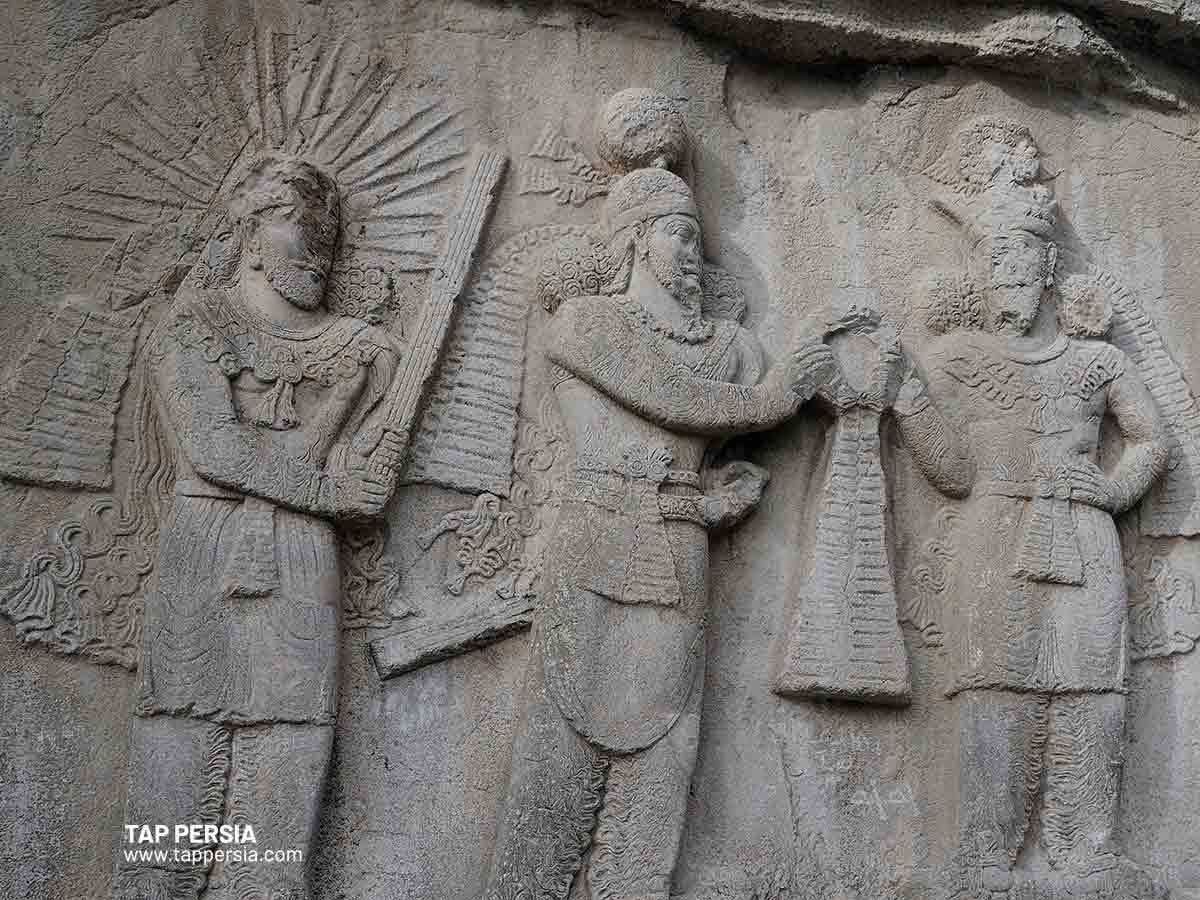
Ardashir I: The Founder of the Sassanid Dynasty
In Istakhr, Persis (Pars), a dynasty of priests of the goddess Anahita founded the Sassanid Dynasty under Ardashir I (226–241). He also became the very first king of Persia at the start of the third century.
Although Gocihr, the last monarch of the Bazrangids—the local lords of Persis who served as clients of the Arsacids—had been the ruler of a tiny town named Kheir, his father Papag (also pronounced Babak and Papak) had succeeded in removing him in 205 and installing himself as the new king.
He was raised by Rodhagh, the daughter of the governor of the province of Peris. Sassan, the renowned priest of the Temple of Anahita, who served as the line’s founder, was the paternal grandfather of Ardashir I.
The Overthrow of the Parthians: The Death of the Last Arsacid King
The Sassanid Empire shortly followed the Parthian Empire, which had been undermined by internal turmoil and battles with Rome. In actuality, Ardashir I, the native Iranian ruler of Persis (now Fars Province, Iran), from Istakhr, began the conquest of the neighboring countries not long after in defiance of Arsacid’s rule. On April 28, 224 AD, he faced Artabanus IV at the Battle of Hormozdgn, perhaps at a location close to Isfahan, and defeated him, establishing the Sasanian Empire.
Cultural Influence of the Sassanid Empire: Bridging East and West
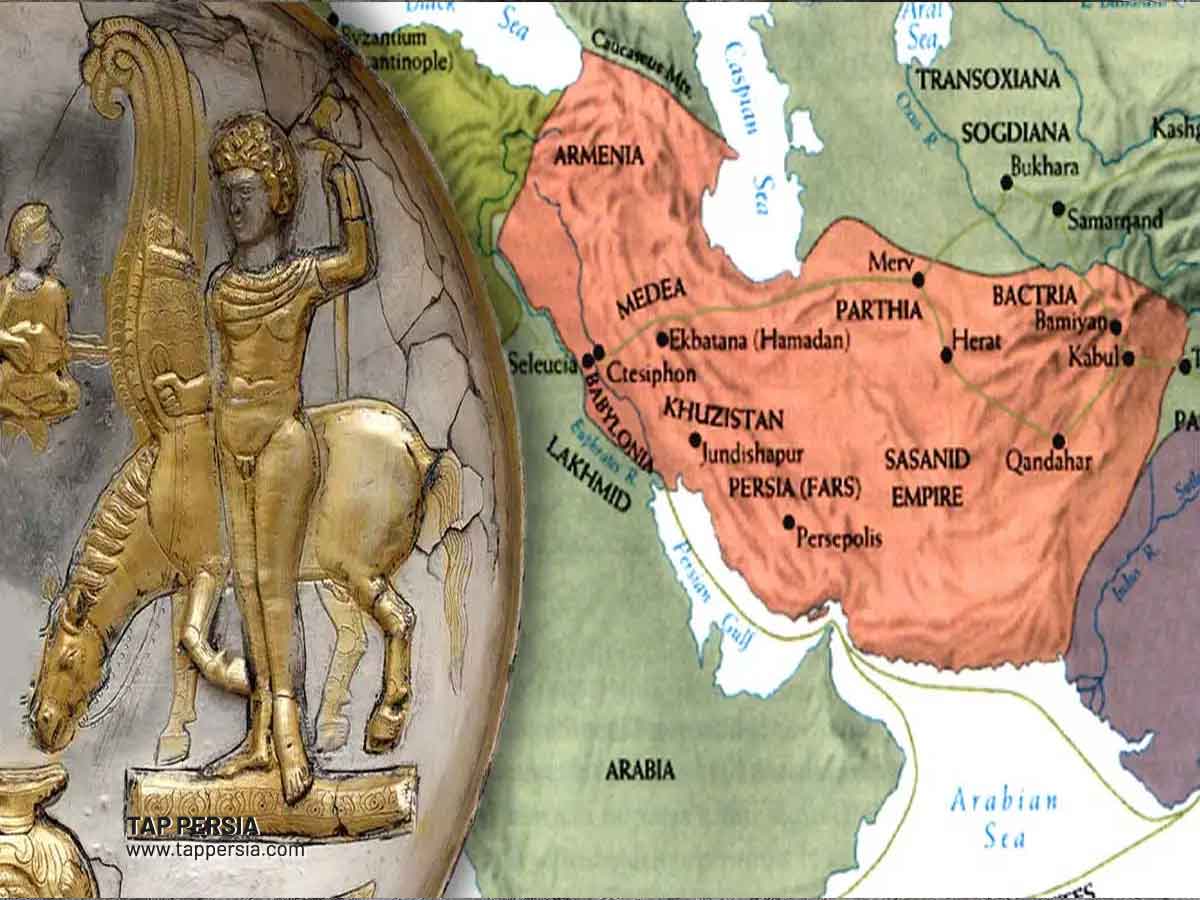
The Sassanid era was a significant and influential time in Iranian history because Iranian culture had a significant impact on China, India, and Roman civilization, which in turn had an impact on Western Europe and Africa. This influence had a significant impact on how both Asian and European medieval art developed. It continued after the Sasanian monarchy collapsed in the middle of the seventh century and the rise of Islam.
Sassanids in Art, Architecture, and Music
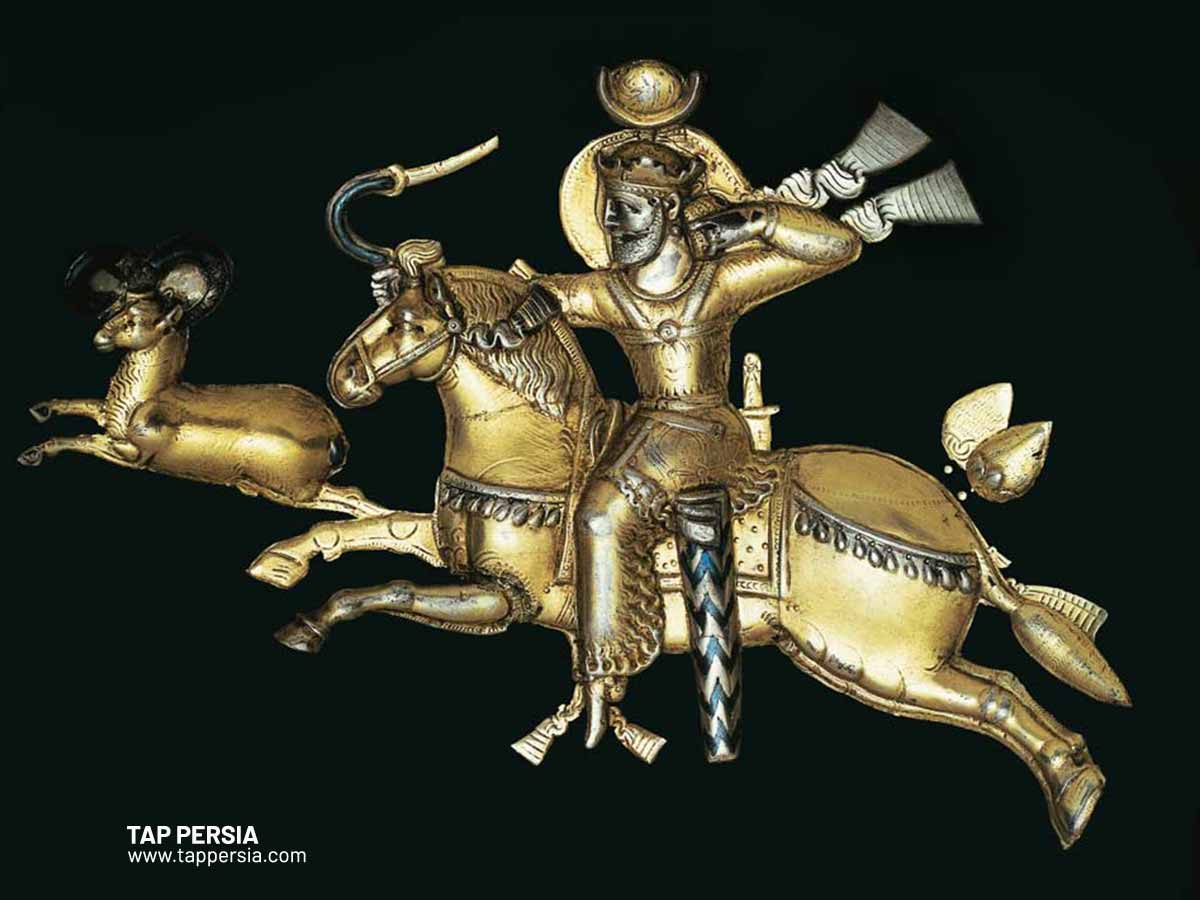
The Sassanid Empire, which flourished from 224 to 651 CE, produced music that is referred to as Sasanian music. Khosrow II (r. 590–628) was a notable sponsor, and his reign is considered the “golden age” of Persian music. Many Shahanshahs were avid patrons of music, notably Ardashir I and Bahram V.
By the period of Khusro Parviz, eminent musicians were frequently present at the Sassanid royal court. There are numerous preserved paintings representing what was obviously a large-scale production, but the architecture, reliefs, and metalwork are where the Sassanids’ art is best seen today.
Plaster reliefs were probably far more prevalent inside than the few remaining parts of the stone reliefs. The Statue of Shapur I is a notable exception. The Parthian practice of molded stucco ornamentation to structures persisted, and there are significant Sassanid rock reliefs as well as massive figurative representations.
As described by Byzantine diplomats, surviving Sassanid art displays elegant and chivalric scenes with a significant amount of splendor, reflecting the opulent lifestyle and exhibition of the Sassanid court.
Although none are as huge as the enormous Statue of Shapur I, images of kings are prevalent throughout numerous of the remaining masterpieces. Particularly popular were dancing females in loose clothing, performers, and hunting and combat scenarios. Less often are frontal views seen.
Massive castle complexes featuring open iwans, barrel vaults and parabolic domes built without centering on squinches of rubble stone or brick were a specialty of the Sassanian era in Persia (3rd to 7th century A.D.). Eight of the most significant remaining examples of Sassanian art and architecture, all of which are found in the Fars provincial communities of Firuzabad, Bishapur, and Sarvestan, have been listed by UNESCO. These 8 Sassanian Archaeological Sites are situated in the Sarvestan, Bishapur and Firuzabad areas.
Transfer of Sassanid Culture to the Islamic World
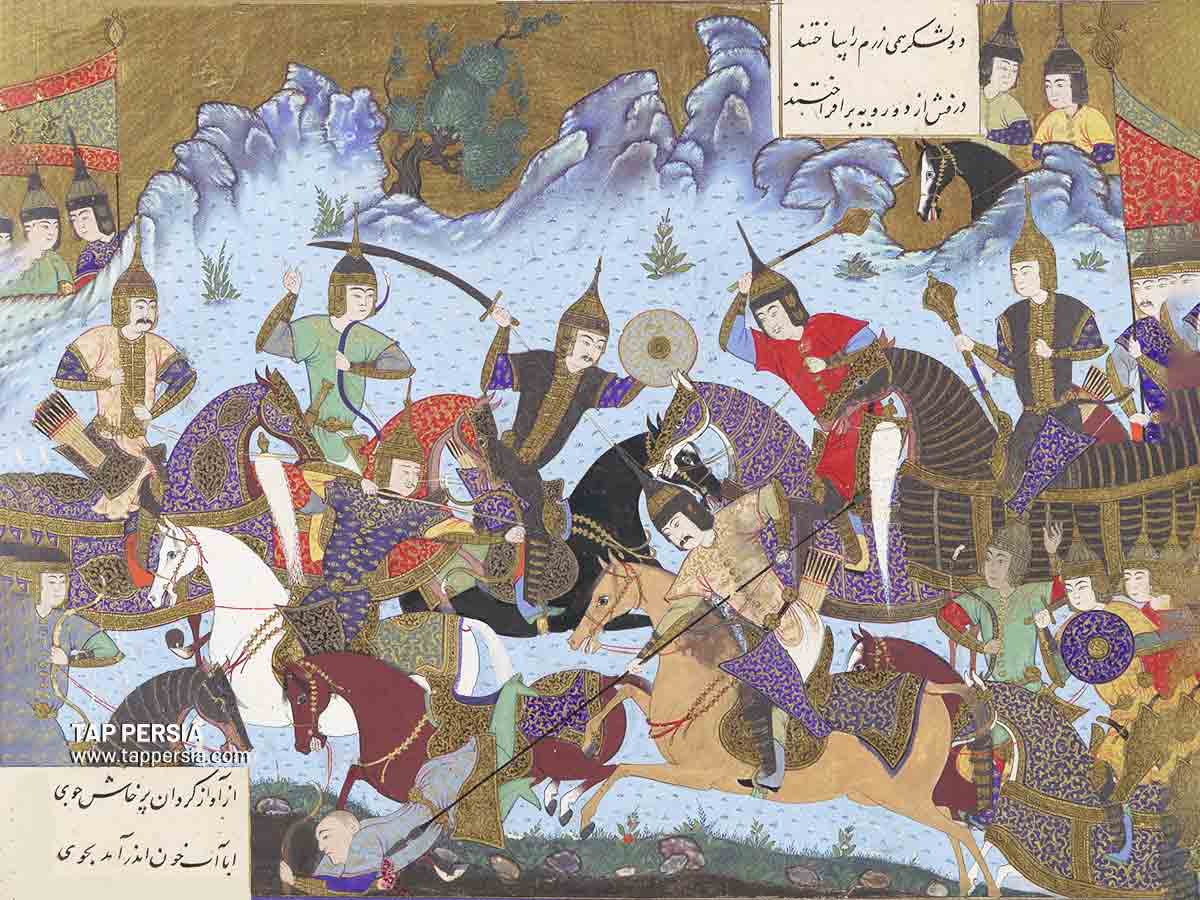
Before being conquered by Arab Muslims, ancient Iranian civilization reached its pinnacle during the Sasanian era, which is regarded as a turning point in Iranian history. The Sassanid Empire created a sophisticated and centralized administrative structure, accepted the many religious and cultural practices of their people, and revived Zoroastrianism as a force for legitimacy.
Many aspects of Islamic culture, including music, art, architecture, philosophy and literature, were largely derived from Persian civilization.
Military Prowess and International Relations: A Glimpse into Sassanid Warfare
Here we will talk about the remarkable military power and International relations during the Sassanid Empire:
Sassanid Military Reforms under Khosrow I
The Iranian army was able to wage long-lasting battles, engage in combat on several fronts, and deploy itself more quickly because of significant military changes. Similar to other facets of the empire, the military was reliant on the feudal lords of the great families to supply troops and cavalry prior to Khosrow’s rule.
When the Shahanshah was summoned, each family would send their own army and supplies. The rise of the inferior Dehghan noble class, who were supported and paid for by the central government, superseded this structure.
The Aswaran cavalry comprised the majority of the Sasanian army. The Aswaran cavalry once only allowed the nobility to join, which was very restrictive and led to a scarcity of highly skilled troops. Since the Dehqan class was now regarded as nobility, they were eligible to join the cavalry force, which considerably increased its size.
More emphasis was placed on troop organization and training during the military reform. The cavalry continued to be the most crucial element of the Iranian military, followed by foot archers, mass peasant armies, and foot infantry.
A spahbed, or general, was in control of each of Khosrow’s four military districts. The military of the entire empire was under the command of the Iranian commander Eran-spahbed before Khosrow’s reforms. Mesopotamia was located in the west, the Caucasus was located in the north, the Persian Gulf was located in the center and southwest, and Central Asia was located in the east. This new quadripartition of the Sassanid Empire led to the creation of “[administration] of a vast, multiracial, multiregional and multicultural empire” in addition to a more effective military structure.
Sassanid Relations with Neighboring Empires
All other rulers in the Sasanid Empire were seen as his subordinates by the Shahanshah. The Sasanian Shahanshah was superior to all other kings and authorities, including those of China, the Turks and Rome. Furthermore, it appears that the early Sasanian kings thought they inherited their power from the gods.
They were able to use this to justify conquering the Parthians and establishing their dominance over the other semi-autonomous kings of the Sassanid Empire, which likely contributed to war with their neighbors. In contrast to how Parthian rulers had portrayed themselves, the Sasanian monarch was elevated in this manner. It served as the intellectual foundation for the Sasanian monarch’s reign over a more centralized administration than had been the case before.
The Battle of Bukhara: A Turning Point in Sassanid History
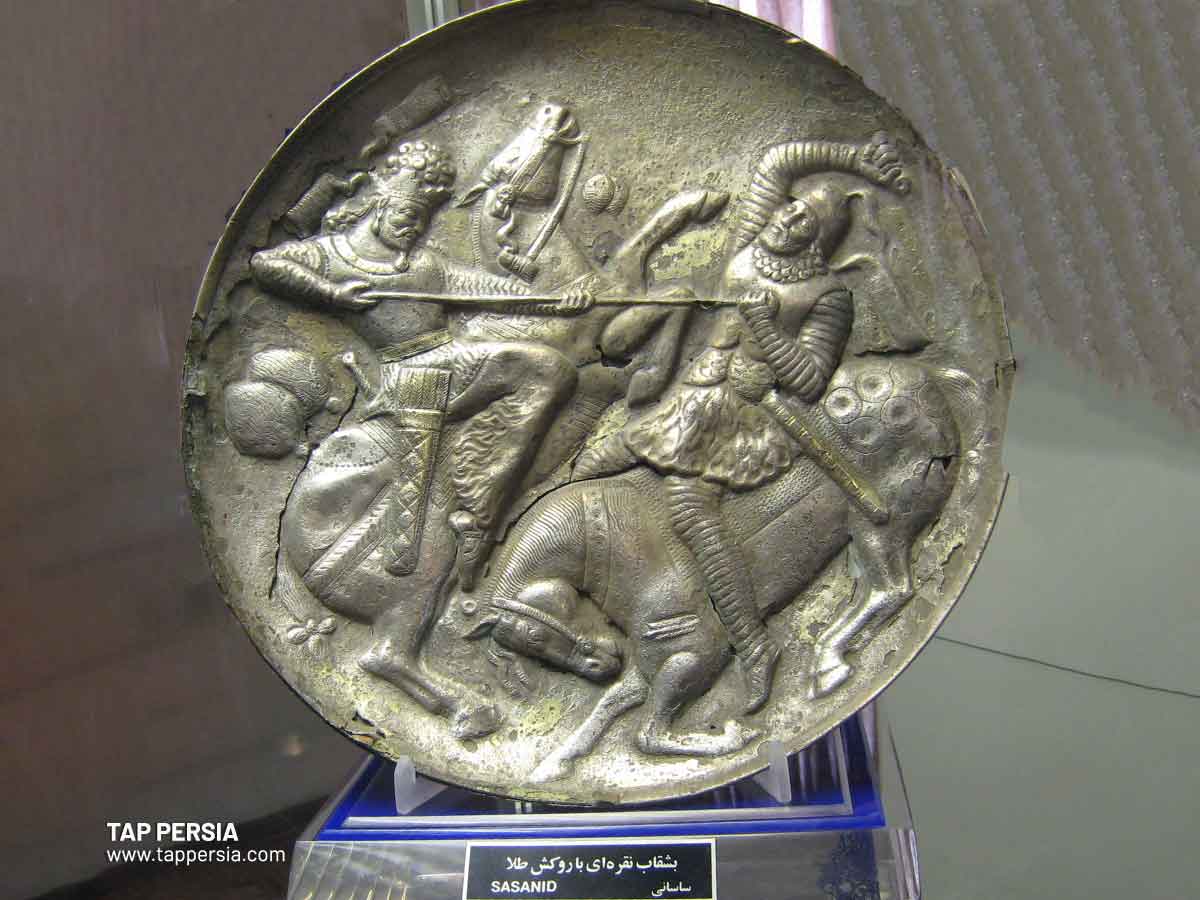
Around 560, the Sasanian Empire united with the First Turkic Khaganate to battle the Hephthalite Empire in the Battle of Gol-Zarriun, also known as the Battle of Bukhara.
A Partnership with the Western Turkic Khaganate
When Peroz I, the paternal grandfather of Khosrow I Anushirvan (r. 531–579), was killed at the Battle of Herat in 484, the Hephthalites gained control of a sizable portion of Khorasan from the Sasanians.
Khosrow I was able to concentrate on the Eastern Hephthalites and exact revenge on them after reaching a durable peace accord with the Byzantines in the West. The Sasanians sought partners despite the expansion of their military might as a result of Khosrow’s reforms because they were still apprehensive about invading the Hephthalites on their own.
The invasion of Central Asia by the Göktürks served as their response. The invasion of Turkic people into Central Asia swiftly turned them into the Hephthalites’ natural adversaries and rivals.
Although the Hephthalites had military might, they lacked the organization needed to engage on several fronts of battle. The Hephthalites were backed by men from Shughnan, Balkh, Termez, Amol, Zamm, Khuttal, and Washgird, according to Firdausi’s narrative in the Shahname. By forming an alliance and attacking the Hephthalites from two angles, the Sasanians and Turks took advantage of their disarray and division. As a consequence, the Sassanid Empire occupied the country south of the Oxus River, while the Turks seized the area north of the river.
The Consequences and Aftermath of the Battle
Following the war, the Hephthalite Empire was shattered and divided into various lesser kingdoms, including the one in Chaghaniyan controlled by the Hephthalite ruler Faghanish. Ghadfar and the remainder of his soldiers fled southward and sought safety in Sasanian land. In the meantime, the Hephthalite aristocracy and the Turkic Khagan Sinjibu came to an accord, and Faghanish was named the new Hephthalite monarch.
Khosrow I found this to be very offensive and marched towards the Sasanian-Turkic frontier at Gurgan because he saw the Turkic alliance with the Hephthalites as a threat to his authority in the east. When he arrived, a Turkic Sinjibu representative welcomed him and gave him presents. Khosrow made his power and military might know there, encouraging the Turks to form an alliance with him. Faghanish was required under the agreement to visit the Sasanian court at Ctesiphon and persuade Khosrow to accept him as the king of the Hephthalites.
As a result, Faghanish and his kingdom of Chaghaniyan were made vassals of the Sasanian Empire, which established the Oxus as their eastern border with the Turks. But after then, the Turks’ and Sasanianians’ cordial ties gradually deteriorated. Both the Sasanians and the Turks wanted to dominate commerce along the Silk Road and between the Far East and the West. An alliance and a two-pronged assault against the Sassanid Empire were proposed by a Turkish diplomat sent to the Byzantine Empire in 568, but nothing of the kind transpired.
The Fall of the Sassanid Empire: The Arab Conquest of Persia
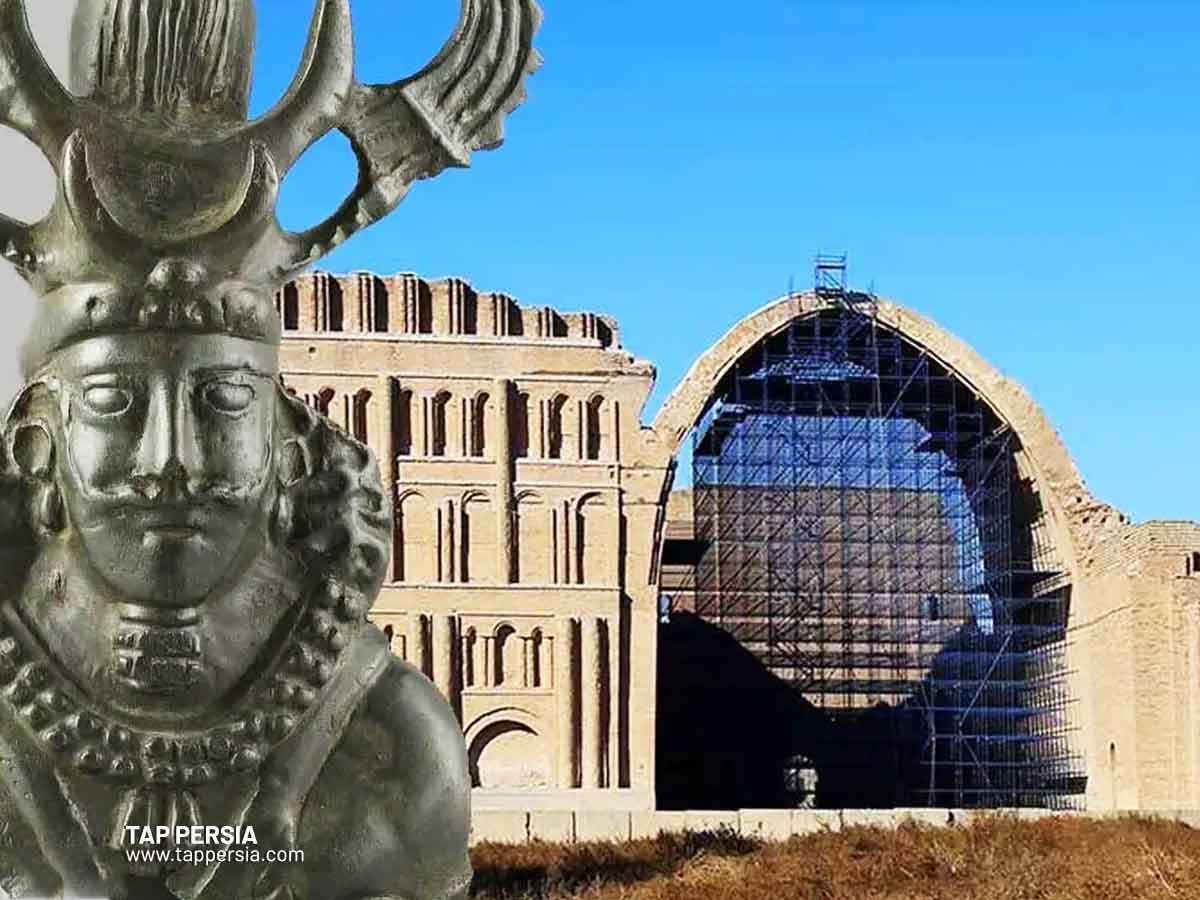
Yezdegerd, a grandson of Khosrow, took the throne in the spring of 633 CE, the same year that the first Arab squadrons launched their initial incursions into Persian territory.
Both the Iranians and the Byzantines were worn out after years of fighting. The economic downturn, high taxes, religious turmoil, tight social stratification, growing influence of the provincial landowners, and a quick succession of kings further undermined the later Sassanid empire. These factors facilitated the Arab invasion in the 7th century.
The Arab Conquest and the End of the Sassanid Empire
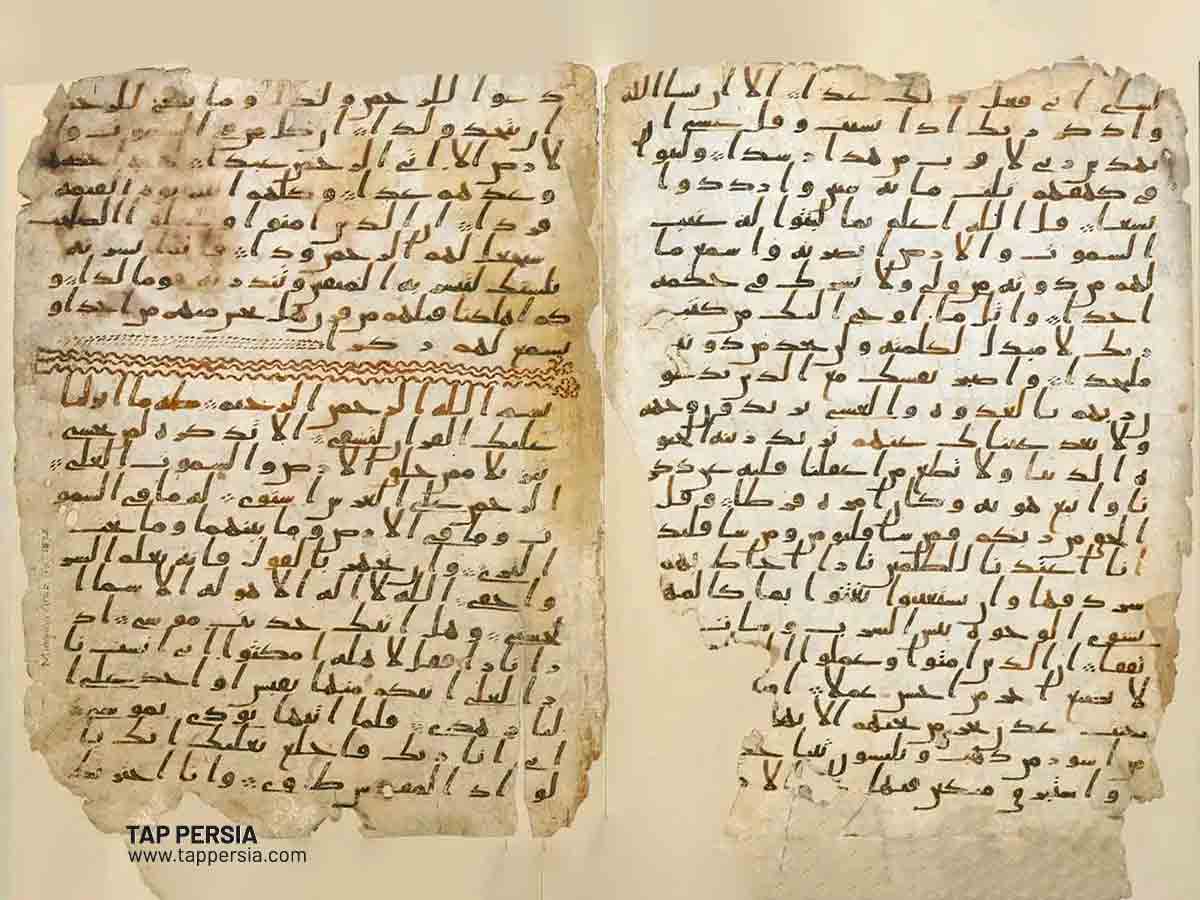
The first Arab forces’ pressure was never completely met by the Sassanids mounting an effective defense. Yazdegerd, a young man at the mercy of his advisors, was unable to unite a huge nation that was disintegrating into several feudal kingdoms. The Battle of the Bridge in 634 marked the first conflict between the Sassanids and Muslim Arabs, which the Sassanids ultimately won. But the danger from the Arabs did not end there; it soon returned from the well-organized troops of Khalid ibn Walid.
At the Plains of al-Qadisiyyah in 637, a Muslim army under the leadership of Caliph Umar routed a greater Persian force commanded by General Rostam Farrokhzad and besieged Ctesiphon. After a protracted siege, Ctesiphon was overrun, and Yazdgerd escaped the city, taking the majority of the huge wealth of the Empire with him. The Sassanid administration quickly ran out of money when the Arabs quickly took Ctesiphon, giving them a valuable financial asset to employ for their own purposes.
Invading armies were repelled by the Sassanid governors despite their best efforts during the Battle of Nihawand.
This essentially ruined the empire’s financial resources, annihilated the Asawaran (Azatan) knightly caste, wrecked its military command system, decimated its non-noble army levies, and rendered the empire defenseless. Yazdgerd and the majority of the nobility of Persia escaped further inland to the eastern province of Khorasan, where they made significant contributions to the dissemination of Persian culture and language as well as the founding of the first native Iranian Islamic dynasty, the Samanid Empire, which sought to revive and resurrect Sassanid customs and culture after the Islamic invasion.
The majority of the Sassanid Empire’s territory was incorporated into the Islamic caliphate in five years after it fell. Many Iranian cities, nevertheless, resisted, notably Rayy, Isfahan, and Hamadan, which Islamic caliphates decimated three times. The Academy of Gundishapur was demolished, and its library’s stacks of volumes were set on fire by invaders.
A few Sassanid documents and books survived destruction and were eventually translated into Modern Persian and Arabic. Many Iranian cities were burned to the ground or left in ruins after the Islamic conquest, along with bridges, palaces, and royal Persian gardens.
Delving into the Sassanid Era: Notable Historical Sites
Numerous architectural wonders from the Sassanid Empire, which is renowned for its extensive history and cultural significance, provide a glimpse into this enthralling era. The most popular Sassanid Empire sites are included in the list below:
1.Taq Kasra or Arch of Ctesiphon
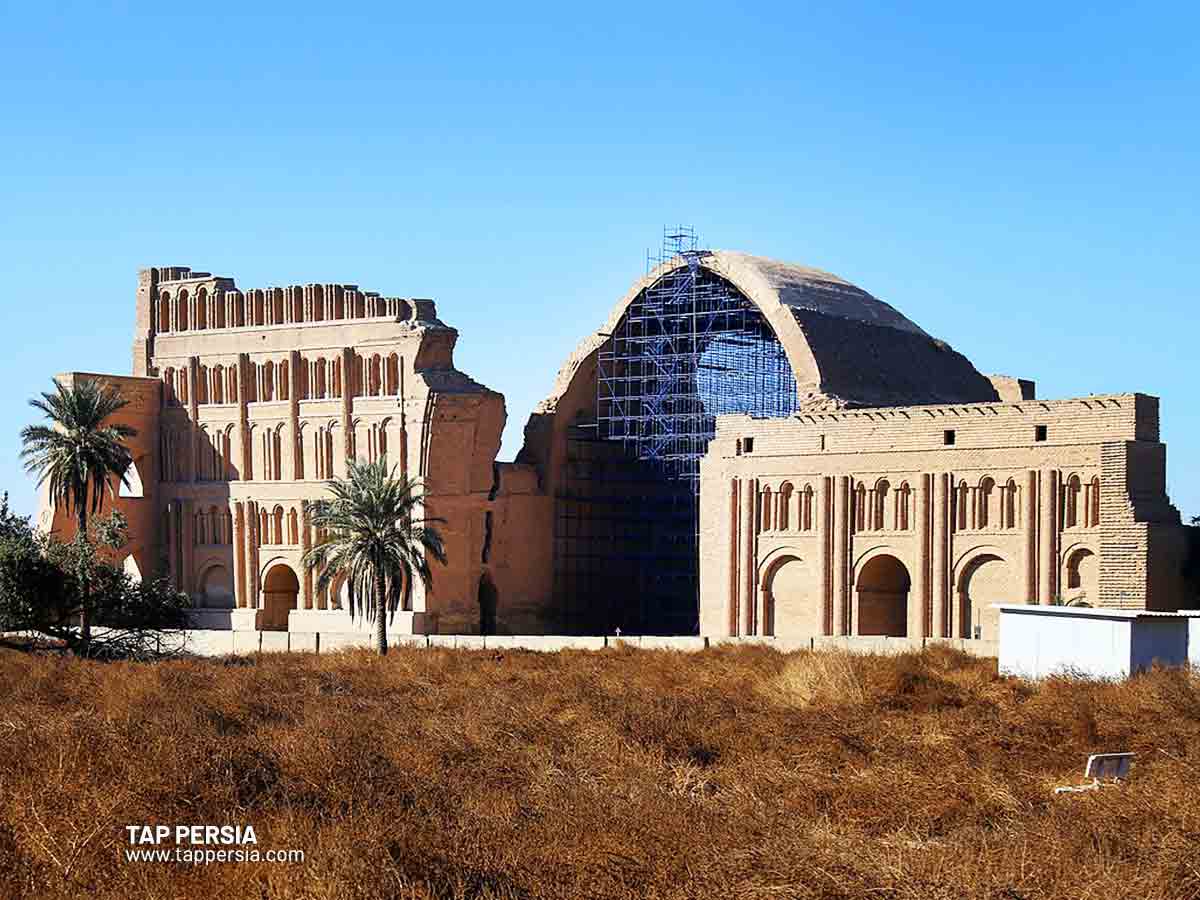
One of the most well-known remains of the Sassanid Empire is this magnificent archway, which was formerly a part of a stately palace in the capital city of Ctesiphon.
2.Naqsh-e Rustam
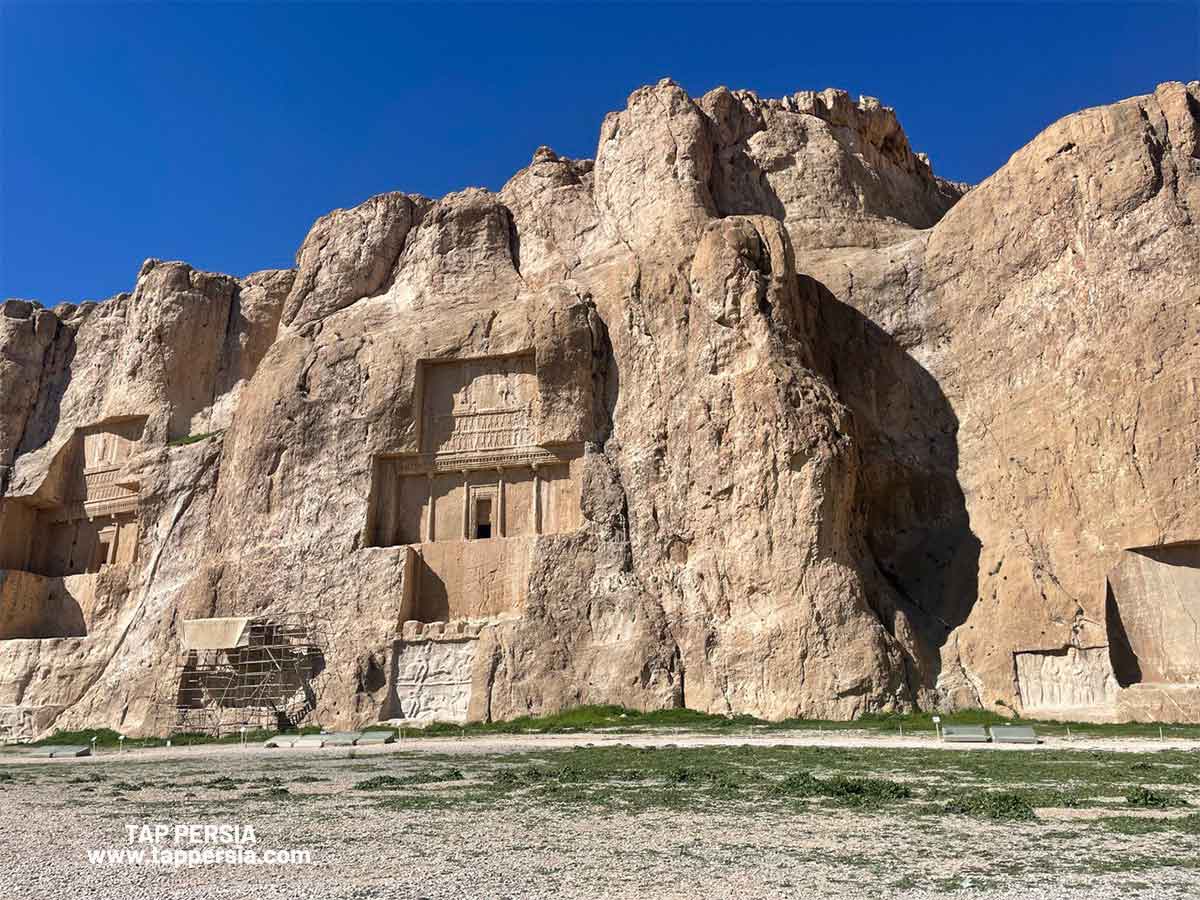
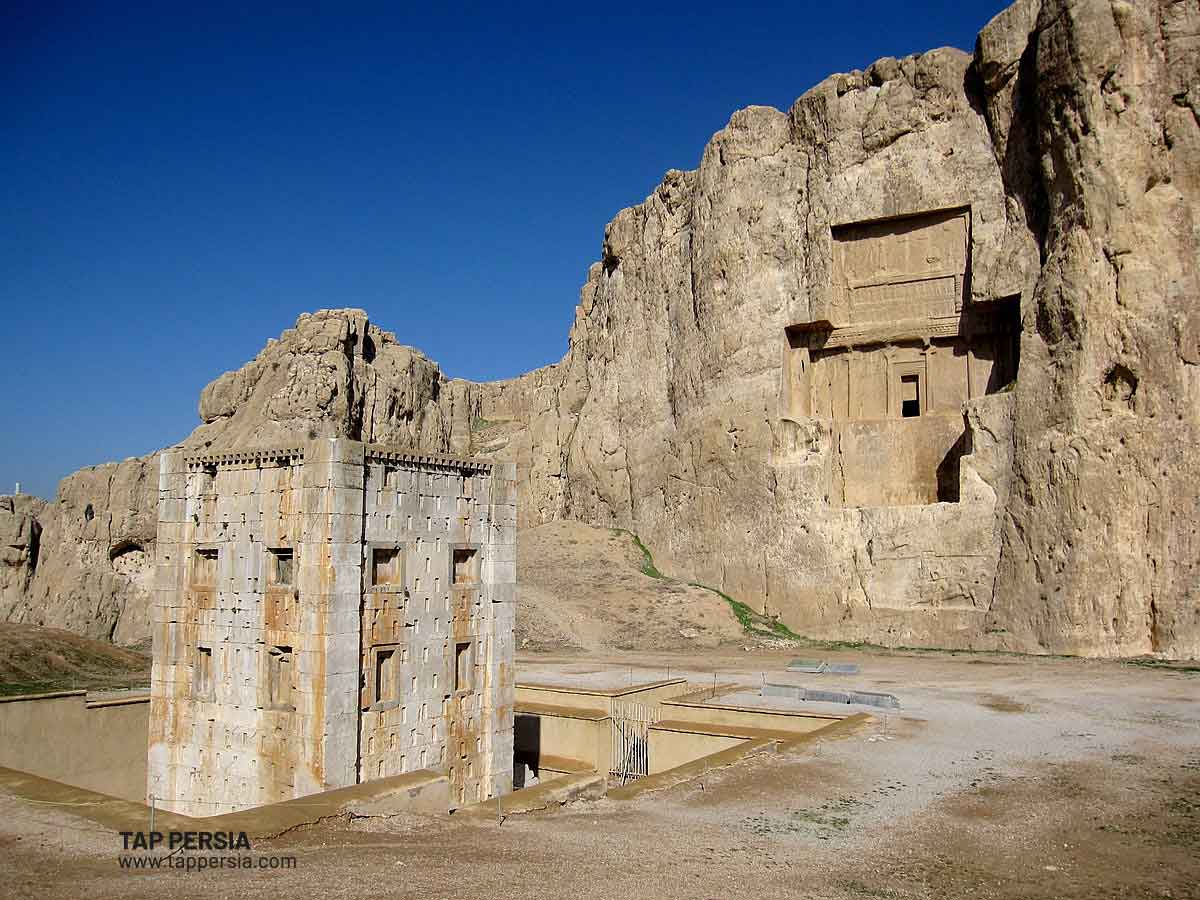
The graves of various Achaemenid kings are found in this ancient necropolis, which is situated approximately 12 km northwest of Persepolis in the Iranian province of Fars. It also has some rock reliefs from the Sassanid dynasty.
3.Persepolis
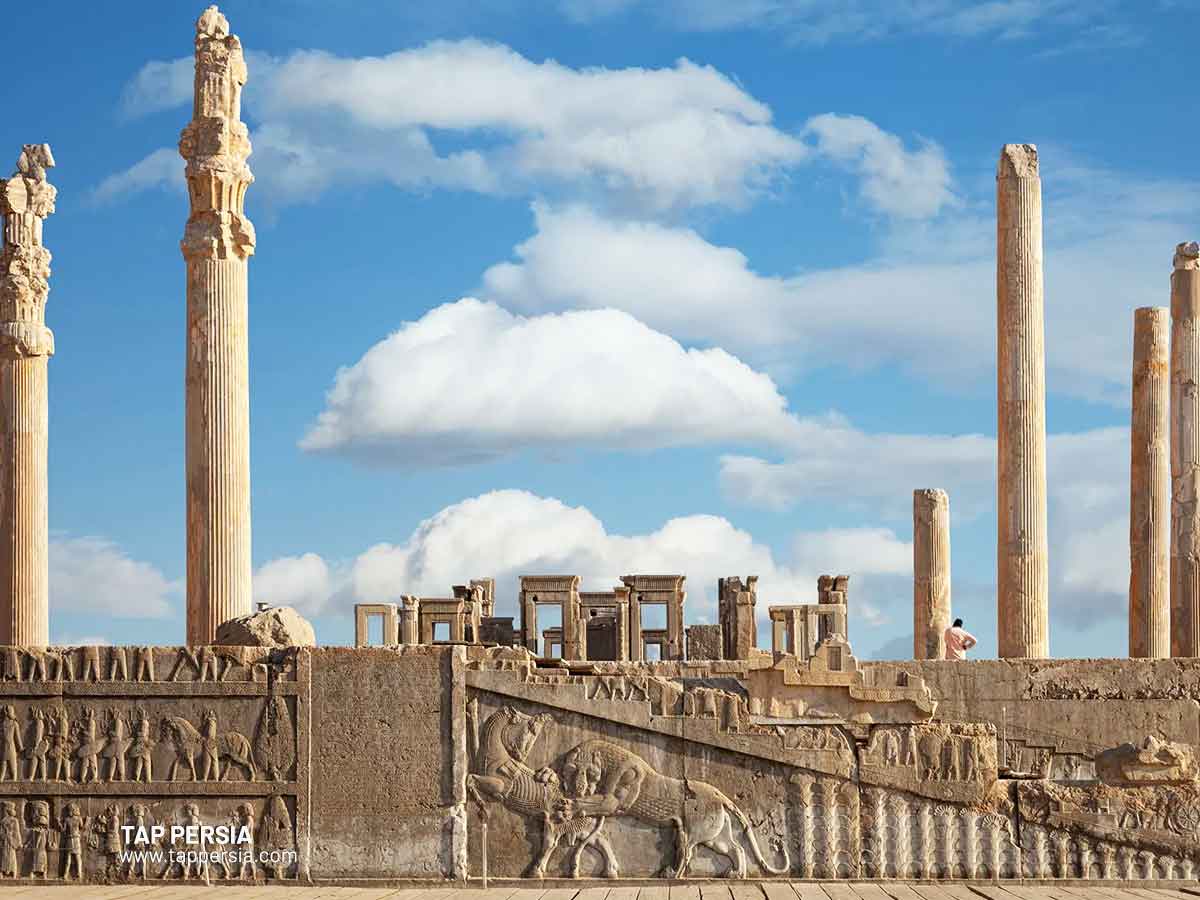

The site was improved during the Sassanid era after it was first built by Darius I during the Achaemenid era.
4.Bishapur
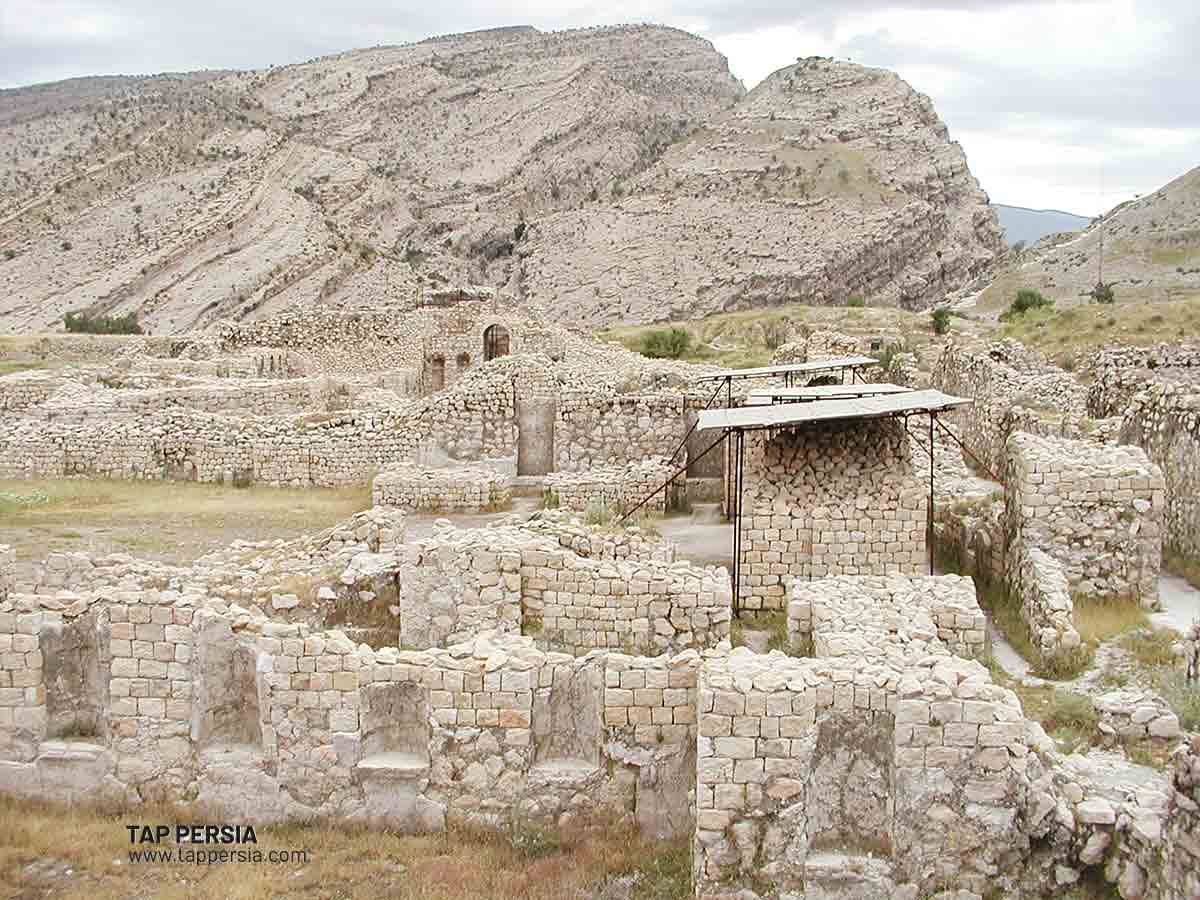
Ancient Bishapur, founded by Shapur I, is situated in the Kazerun County of the Pars province, in the contemporary Iranian city of Fars.
5.Ghal’eh Dokhtar
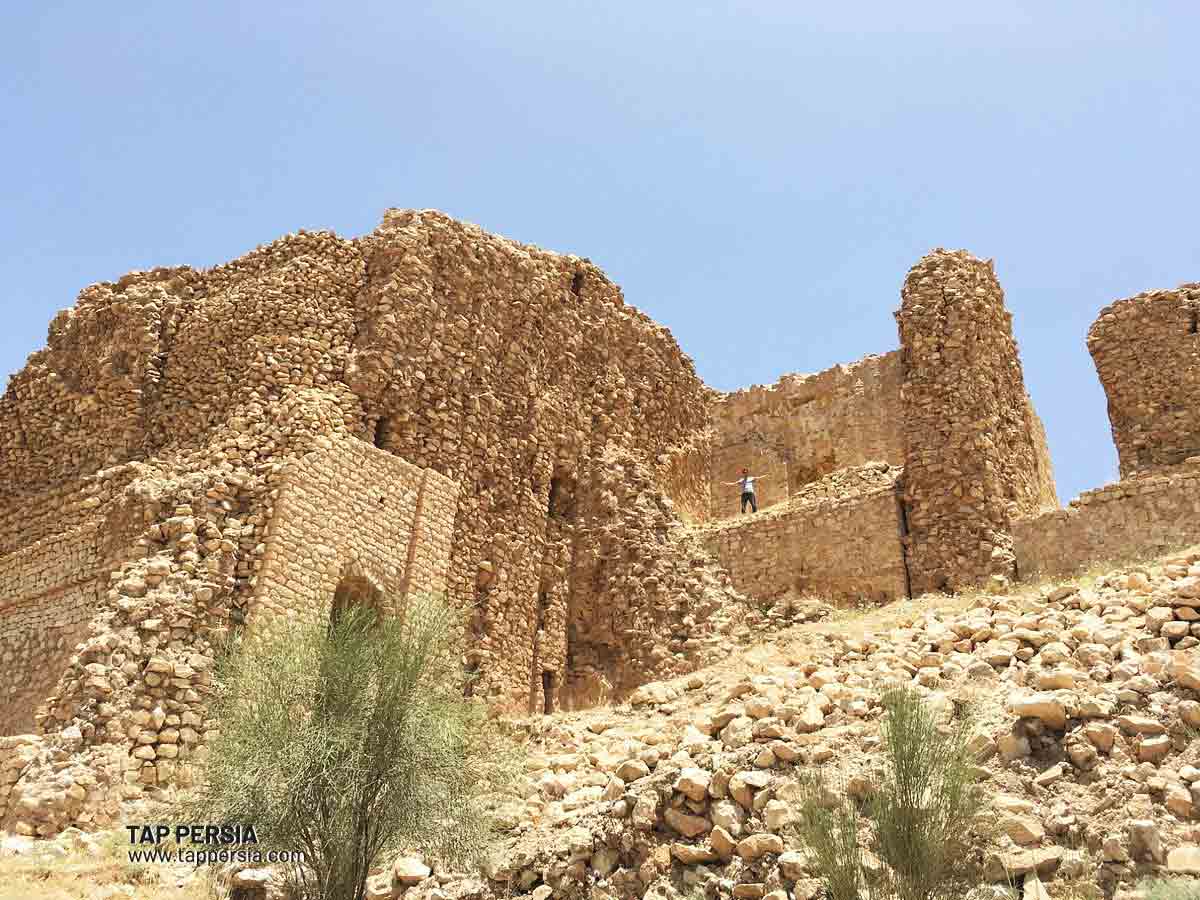
Another important Sassanid site is this castle, which was erected by Ardashir I and is still standing in modern-day Fars, Iran.
6.Palace of Ardashir
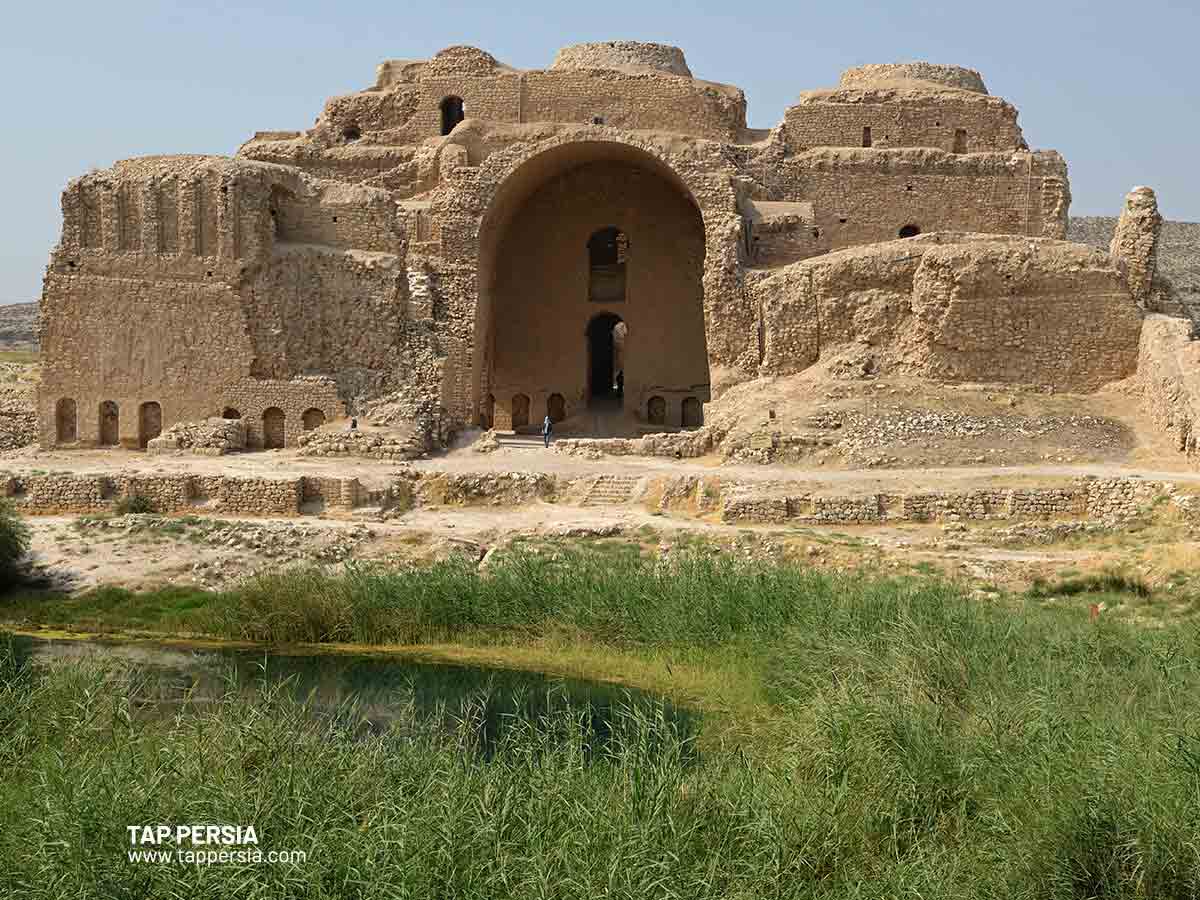
This palace was built by Ardashir I and is situated close to Firuzabad and Gor in Fars, Iran.
Planning Your Visit
Please make careful to check with TAP Persia about accessibility and opening hours before making travel plans to these historical places since they may be impacted by regional or international events. Exploring these wonders is a voyage into the Sassanid Empire’s splendor and provides an engrossing look at Persia’s final pre-Islamic superpower.
Who were the Sassanians?
The Sassanid Empire, also known as the Sasanians and spelled Sassanians as well, was an ancient Iranian dynasty that controlled an empire from 224-651 CE. It was established via Ardashir I’s conquests in 208–224 CE and was overthrown by the Arabs in 637–651. Sasan, an ancestor of Ardashir, was the name given to the dynasty.
Why did the Sassanid Empire fall?
In one of the most famous battles of the Arab Conquest, attackers from the south ultimately brought down the Sassanid Empire.
Why the Sassanian Empire was so powerful
One of the most formidable empires to dominate the Ancient Near East, the Sasanian Empire rose quickly to dominance. Its ascent was a result of Rome’s menace and the Parthian Arsacid Empire’s inherent limitations.
What did the Sassanians believe in?
Under Sasanian reign, Iranian nationalism saw a resurgence. As Zoroastrianism rose to become the official religion, other faiths were occasionally persecuted by the government.



Comment (0)